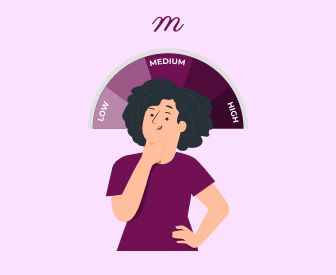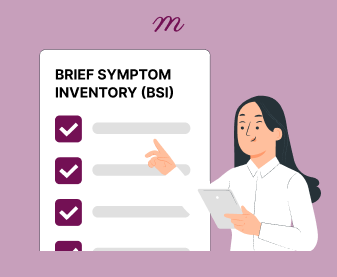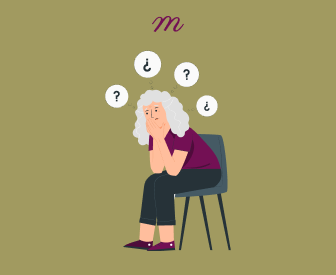Have your progress notes written for you automatically
We’ve all felt nervous meeting new people or putting ourselves out there socially. Making that first move to interact with others requires a degree of vulnerability that can stir up anxious feelings inside. This is normal human experience, at least for me!
I recall how avoidance and distance were once my automatic reactions in relationships due to underlying attachment wounds. Even casual friendships left me drained, as if every social encounter reopened an unhealed ache within. Retreating inward soon became second nature to protect this guarded heart.
The key is to detect this pattern as the first step to face what seems too difficult alone. To that end, this article will be exploring the Adult Attachment Scale (AAS).
What is the Adult Attachment Scale (AAS)?
The Adult Attachment Scale (AAS) is a self-report tool designed to assess adult attachment style. It was created in 1990 by Nancy Collins and Stephen Read, building upon the research conducted by Hazen and Shaver (1987) on attachment theory.
You might be pondering, “Attachment theory? What the hell you’re talking about?”
Let me explain. Attachment theory is a psychological theory proposing that our early relationships with caregivers deeply shape how we connect with others later in life.
The theory outlines four general attachment styles that develop from infancy:
- Secure attachment is when a child feels comfortable with intimacy and trusting their caregivers to meet their needs. They carry this sense of security into adulthood.
- Anxious-preoccupied attachment develops when children are inconsistently cared for – they crave close relationships but constantly worry about abandonment.
- Avoidant attachment occurs if caregivers are disengaged or reject a child’s bids for connection. These individuals prefer more distance and independence in their relationships.
- Disorganized attachment results from unpredictable or confusing caregiving like abuse/neglect. As adults they may alternate between anxious and avoidant behaviors in relationships.
Long story made short?
- Secure attachment: Comfortable with intimacy and trusting of others.
- Anxious-preoccupied: Eager for closeness but constantly worried about abandonment.
- Avoidant: Uncomfortable with intimacy and tend to distance themselves from others.
- Disorganized: Confused view of self and others due to inconsistent caregiving experiences. May display both anxious and avoidant behaviors.
By understanding these patterns, attachment theory provides insight into why we behave the way we do emotionally.
Now, Going Back to the Adult Attachment Scale
The AAS is an 18-item self-report measure used to assess adult attachment styles.
Items are rated on a 5-point Likert scale corresponding to how much a person agrees with each statement.
- Closeness: this examines an individual’s comfort level with intimacy and vulnerability with attachment figures. This speaks to their belief in whether intimacy and dependence are positive aspects of bonding or if they lead to harm.
- Dependency: Ability to depend on others. In other words, what are the individual’s expectations when it comes to relying on attachment figures to be available, responsive and supportive in times of need. A person’s score on this scale gives clues to their working model of whether significant others can be trusted to meet caregiving needs.
- Anxiety: Level of worry about rejection or abandonment. This taps into fears of unworthiness and anticipations of neglect, arising from past experiences with early caregivers.
Scores on these three dimensions are used to categorize individuals into one of four attachment styles outlined in attachment theory (secure, anxious-preoccupied, avoidant, and disorganized).
Importantly, research has shown the AAS demonstrates good reliability and validity as a tool for evaluating adult attachment styles. It has been widely employed in clinical studies exploring links between attachment and outcomes such as relationship satisfaction, mental health functioning, and stress coping abilities.
When to Use the AAS?
- The AAS provides useful self-reflection for individuals to examine their own attachment tendencies and patterns.
- It also aids therapists in assessing attachment-related issues that may underlie their clients’ relationship problems or difficulties.
Administration, Scoring, and Interpretation
To properly administer the Adult Attachment Scale (AAS) in research and therapeutic settings, you can follow the steps below:
- Start by putting the participant at ease.
- Introduce the AAS as a way to understand relationship patterns, not as a test with right vs wrong answers.
- Having your client complete it in a quiet, comfortable environment without time limits allows for thoughtful reflection.
- Verbalizing the instructions ensures comprehension while respecting literacy levels.
- Participants should feel free to ask clarifying questions. Remaining available but not hovering respects their privacy.
- Once finished, be attentive when collecting responses. Thank participants for their willingness to share intimate details which will aid the clinical process.
- Score the AAS yourself in order to pick up on any nuanced response patterns not captured in numbers alone.
- When explaining attachment styles, highlight the full spectrum as normal human variation rather than pathological. Discuss how our early relationships interact with temperament to shape core beliefs which partially drive present relating.
- Be prepared to discuss scores in a thoughtful, non-judgmental manner. See responses as opportunities rather than deficits; as starting points for gentle self-discovery, not rigid classification. Attachments adapt throughout life’s developmental stages.
Steps to Score the AAS by Hand
- Add Up Ratings for Each Item
For each of the 18 items, record the participant’s rating (between 1 and 5).
2. Calculate Total Scores for Each Dimension
Closeness Subscale: Sum the ratings for the items that pertain to this dimension.
Dependency Subscale: Sum the ratings for the items that pertain to this dimension.
Anxiety Subscale: Sum the ratings for the items that pertain to the Anxiety dimension.
3. Divide by the Number of Items
Each subscale consists of 6 items. To find the average score for each dimension, divide the total score by 6. The participant’s score for each dimension will be between 1 and 5.
Example Calculation
Let’s say a participant’s ratings for the closeness subscale items are as follows: 4, 3, 5, 4, 3, 4.
Total Score for this subscale: 4 + 3 + 5 + 4 + 3 + 4 = 23
Average Score for this subscale: 23 / 6 ≈ 3.83
Repeat the same steps for the dependency and anxiety subscales to get their average scores.
Interpreting the Scores
- Secure Attachment: High average scores on Close and Depend, low average score on Anxiety.
- Anxious Attachment: High average score on Anxiety, moderate average scores on Close and Depend.
- Avoidant Attachment: Low average scores on Close, Depend, and Anxiety.
The Adult Attachment Scale in Action!
Now it’s our turn to get into our client’s shoes!
Instructions
Please take a moment to consider each of the following statements carefully. We are interested in understanding your feelings about close relationships in general, encompassing romantic relationships, friendships, and family relationships.
Reflect on how each statement resonates with your experiences and emotions.
Use the scale provided below to rate the extent to which each statement is characteristic of you. Place a number between 1 and 5 next to each statement, where:
1 = Not at all characteristic of me 2 = Slightly characteristic of me 3 = Moderately characteristic of me 4 = Very characteristic of me 5 = Extremely characteristic of me
Note: (S)= Secure, (Av)= Avoidant, (Ax)= Anxious
- I struggle with relying on others (Av)
- People are never there when you need them (Av)
- I feel at ease relying on others (S)
- I trust that others will support me when I need help (S)
- I find it difficult to trust others completely (Av)
- I’m uncertain if I can always count on others to be there for me (Ax)
- I do not often worry about being abandoned (S)
- I frequently worry that my partner might not truly love me (Ax)
- I feel that others hesitate to get as close as I want (Ax)
- I often worry my partner will not want to stay with me (Ax)
- I want to merge completely with another person (Ax)
- My desire to merge sometimes scares people away (Ax)
- I find it quite easy to become close to others (S)
- I do not often worry about someone getting close to me (S)
- I feel a bit uneasy being close to others (Av)
- I am nervous when anyone gets too close (Av)
- I am comfortable having others depend on me (S)
- Often, love partners want me to be more intimate than I feel comfortable being (Av)
Reliability and Validity
The Adult Attachment Scale (AAS) is a trusted tool that has stood the test of time. It is considered reliable and valid.
1. Reliability
Internal Consistency:
One of the key aspects of reliability is internal consistency. This means that all the items on the AAS are working together to measure the same underlying concept. Think of it like a well-tuned orchestra where every instrument plays in harmony. The AAS achieves this harmony with Cronbach’s alpha coefficients ranging between 0.7 and 0.8. In simpler terms, these numbers indicate that the items on the scale are consistent in what they measure.
Test-Retest Reliability:
Another important aspect is test-retest reliability, which looks at how consistent the scores are over time. Imagine taking the AAS today and then again in a few months. If your attachment style hasn’t changed, your scores should be pretty similar. The AAS has shown test-retest correlations between 0.6 and 0.7, suggesting that it reliably measures attachment styles over time.
2. Validity
Construct Validity:
Construct validity is all about ensuring that the AAS measures what it claims to measure: adult attachment styles. The AAS has been shown to have good construct validity because its scores align well with other established measures of attachment, like the Experiences in Close Relationships (ECR) and the Relationship Questionnaire (RQ). This alignment tells us that the AAS is accurately capturing the concept of attachment style.
Predictive Validity:
Predictive validity looks at whether the AAS can predict important outcomes. For example, research has shown that people with a secure attachment style, as measured by the AAS, tend to have higher relationship satisfaction and better mental health. One study even found that individuals with a secure attachment style were more likely to be satisfied with their relationships compared to those with an insecure attachment style. This ability to predict real-world outcomes further supports the validity of the AAS.
Why This Matters
Understanding the reliability and validity of the AAS is crucial for researchers, clinicians, and anyone interested in attachment theory. Reliable and valid measures ensure that the findings and conclusions drawn from the AAS are trustworthy and meaningful. Whether you’re using the AAS for academic research or personal insight, you can feel confident that it’s a robust tool for looking at adult attachment styles.
Finally, A Note from Mentalyc
The Adult Attachment Scale (AAS) offers several advantages and limitations that deserve our attention as well.
On the plus side, the AAS is praised for its strong reliability and validity, meaning it consistently measures what it is supposed to measure over time. This makes it a dependable tool for both researchers and clinicians who are interested in understanding attachment styles.
The AAS is also relatively straightforward to administer and interpret, making it accessible for a wide range of users.
However, the AAS is not without its limitations. One potential drawback is that it relies on self-reporting, which can be influenced by social desirability bias or inaccurate self-perception.
Additionally, while the AAS has good internal consistency, it may not capture the full complexity of attachment styles, especially in diverse cultural contexts.
Despite these limitations, the AAS remains a valuable tool for exploring adult attachment, provided its results are interpreted with these caveats in mind.
Reference:
Collins, N. L., & Read, S. J. (1990). Adult attachment styles and relationship quality in dating couples. Journal of Personality and Social Psychology, 58(2), 659-668. doi:10.1037/0022-3514.58.2.659









